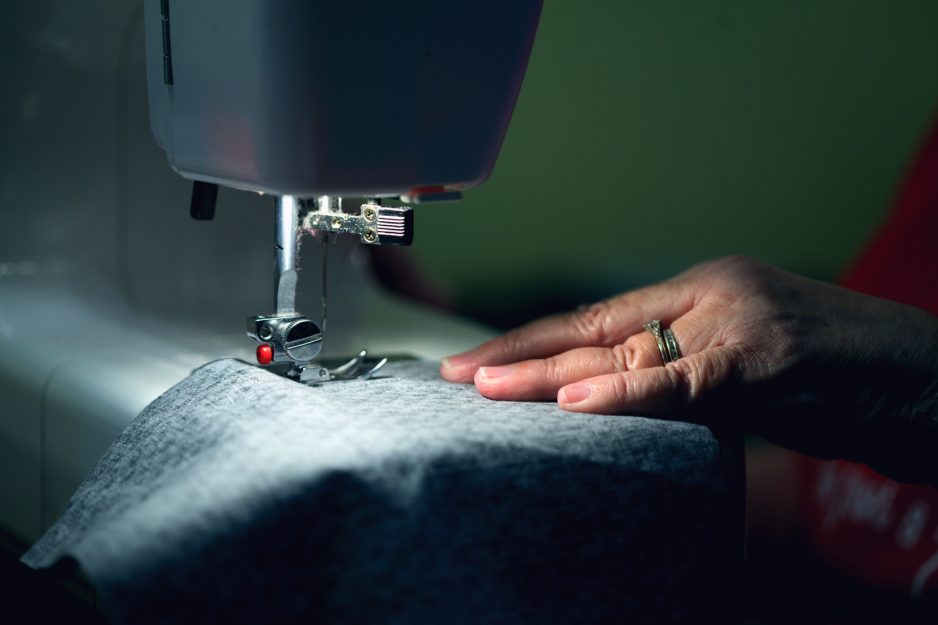If you’re looking for the most breathable fabric, you’re probably trying to keep your cool in the heat. But there’s more to staying cool than having breathable fabric. If you’re going to be even a little bit active, then you’re really on a quest to find the coolest fabric.
We’ll start the discussion with the features you need to look for in a fabric, then provide some pros and cons for different types of materials.
If you want clothing that’s breathable and cool for warm-weather activities, consider these main factors:
Fabric construction and weight: In general, tighter knits or weaves create less breathable fabrics, while more open knits or looser weaves will be more breathable than tight ones. Thinner materials and finer yarns also affect breathability. For a quick, nonscientific test, hold a fabric up and see how much light passes through it—more light suggests more breathability.
Moisture management: Lightweight breathable fabrics help reduce sweat, but moisture-wicking and quick-drying materials go further by taking advantage of the body’s natural cooling mechanism to evaporate moisture away from the skin.
Fit: If your primary activity will be relaxing, then look for a loose fit; if you’re getting moisture-wicking clothing because you plan to be more active, then you need the garment to be in contact with your skin to do its job—not necessarily skintight, but not super billowy either.
Mesh panels and air vents: Some clothing, especially product designed to provide sun protection, includes strategically placed mesh panels and zippered air vents. To learn more about soaking up the sun more safely, read How to Choose Sun Protection (UPF) Clothing.

Breathable Fabrics
Below are broad characteristics of some common warm-weather fabrics. Be aware that features can vary quite a bit within each type of fabric. Also, clothing makers can blend fabrics to achieve a difference in performance, and they can add finishes that alter the typical characteristics of a fabric.
1. Cotton
Available in an incredible variety of fabrics, including all sorts of “non-active” summer clothing.
Pros: Soft, durable, breathable, versatile and easy to care for.
Cons: Absorbs moisture (doesn’t wick away moisture or dry), which is why it’s a poor choice if you plan to break a sweat—in searing heat, though, some people wear cotton and douse it in water to enhance the evaporation cooling effect.
2. Nylon and Polyester
olyester is the workhorse of fitness fabrics. You’ll find it in almost everything you pick up at an athletic wear store, and logically so. Polyester is incredibly durable, wrinkle-resistant and moisture-wicking. It’s also breathable and lightweight, so your sweat evaporates through the fabric and you’ll stay relatively dry.
Despite its lightness, polyester is actually a pretty great insulator, which is why many brands use it in cold-weather workout clothes in addition to tanks, tees and shorts.
Polyester’s one big drawback: Synthetic fabrics like polyester can foster bacteria and fungi growth, and they hold onto odors. So be sure to wash polyester workout clothes soon after breaking a sweat in them — don’t let a sweaty T-shirt sit crumpled in your hamper for long.

Pros: Wicks moisture and dries quickly; resists pilling and abrasion.
Cons: Not as soft as cotton; retains odor; breathability varies based on yarn size and knit or weave.
3. Rayon
You find a wide variety of plant-based-but-highly-processed fabrics under names that include rayon, viscose and lycocell; fabric properties vary widely and these fabrics are often blended with other fabrics to achieve different characteristics.
Pros: Has a silky feel, moderate breathability, drapes nicely, dries quickly.
Cons: Doesn’t wick away moisture as well as polyesters or nylons; wrinkles easily; many rayons require dry cleaning.
4. Linen
Derived from the stalks of flax plants, it’s a popular fabric for casual summer wear.
Pros: Very durable and easy to care for; typically has excellent breathability because linen fibers are large and clothing styles feature more open weaves.
Cons: Like cotton, it absorbs moisture (doesn’t wick away moisture or dry), which is why it’s a poor choice if you plan to break a sweat; also wrinkles very easily.
5. Silk
Often used in underwear; also used in upscale casual wear.
Pros: Luxuriously soft, lightweight and breathable.
Cons: Fragile; not moisture wicking; retains odors; typically requires hand washing.
6. Merino Wool
People generally think of wool as a cold-weather fabric that keeps you warm. This is true, but wool is surprisingly a great warm-weather fabric as well. Merino wool in particular is a great sweat-wicker that’s thinner and softer than regular wool.
The fibers have a double function: When it’s cold out, the crimps in the fibers trap the warm air coming off of your body; when it’s warm out and you start sweating, the fiber wicks sweat away from your body and through the fabric. It almost sounds too good to be true, but sheep do hang out in both harshly cold and blisteringly hot environments, so it’s not all that surprising.
You probably won’t find too much activewear made of purely Merino wool — many athletic wear brands blend Merino wool with polyester and other fabrics for softness and breathability (and price — Merino wool is expensive).
Pros: Breathes well; wicks moisture and is available in lightweight, summer-worthy styles. Doesn’t retain odors like synthetic fabrics do.
Cons: Less durable than cottons, nylons and polyesters.
Which Breathable Fabric Is More Environmentally Friendly?
Some people are drawn to cottons, linens or other plant-based fabrics because they think of them as more “naturally” breathable. But crop production isn’t always benign, nor is processing plant-based fibers. Check out What is bluesign? and What is Organically Grown Cotton? to learn about two important fabric sustainability standards.